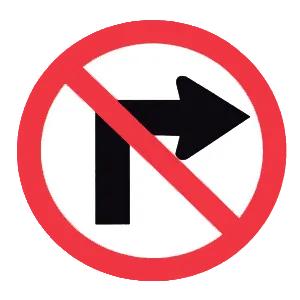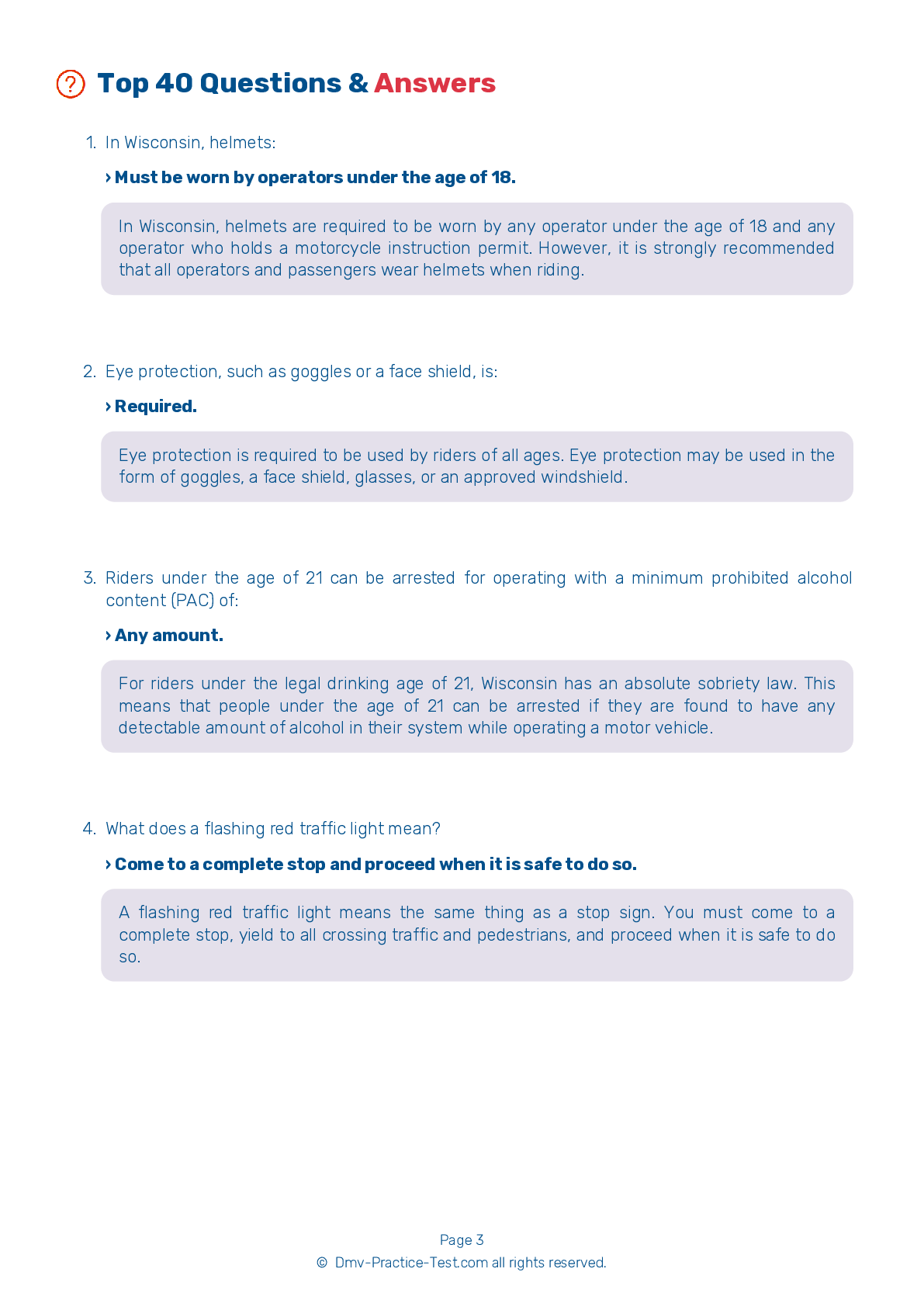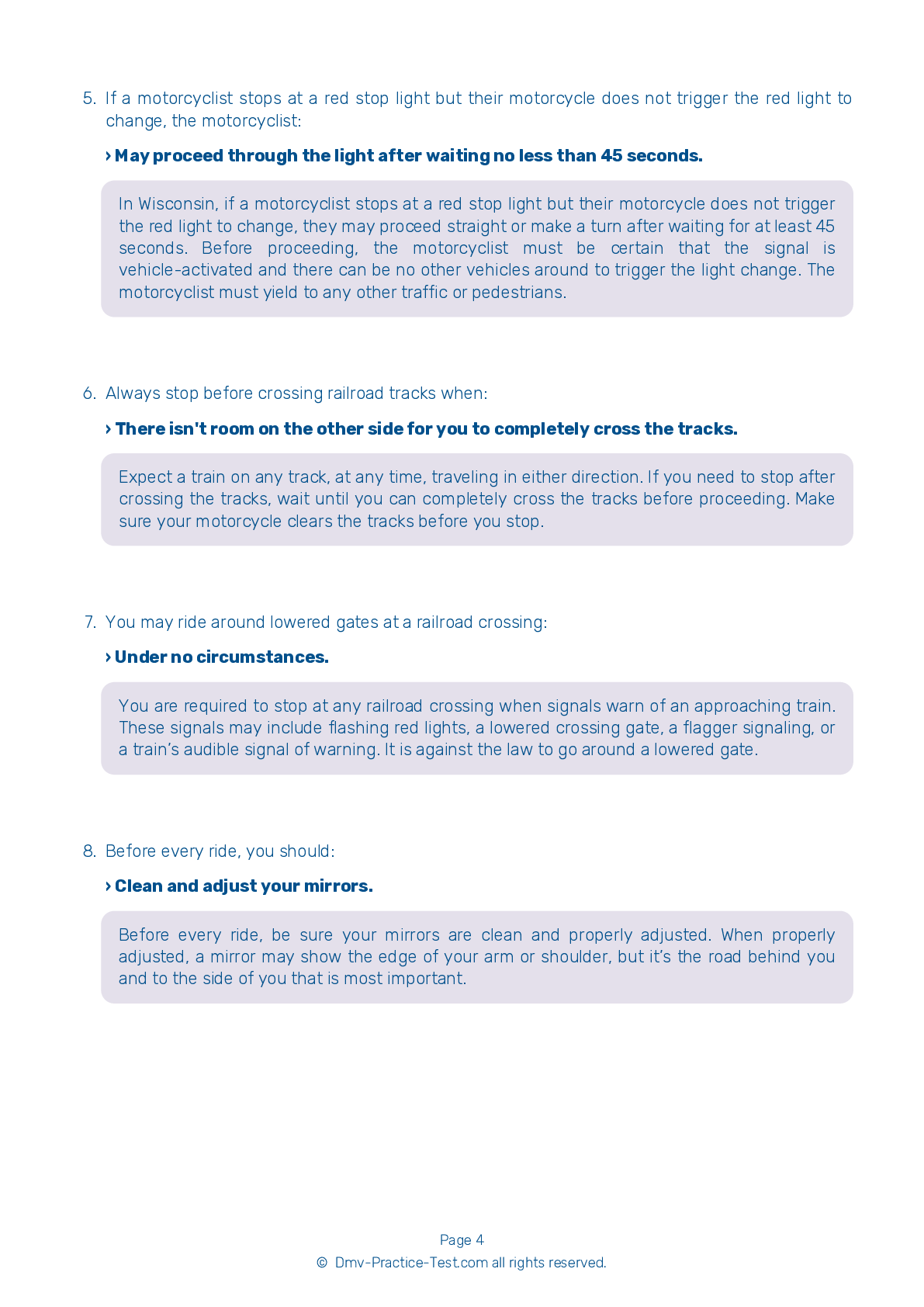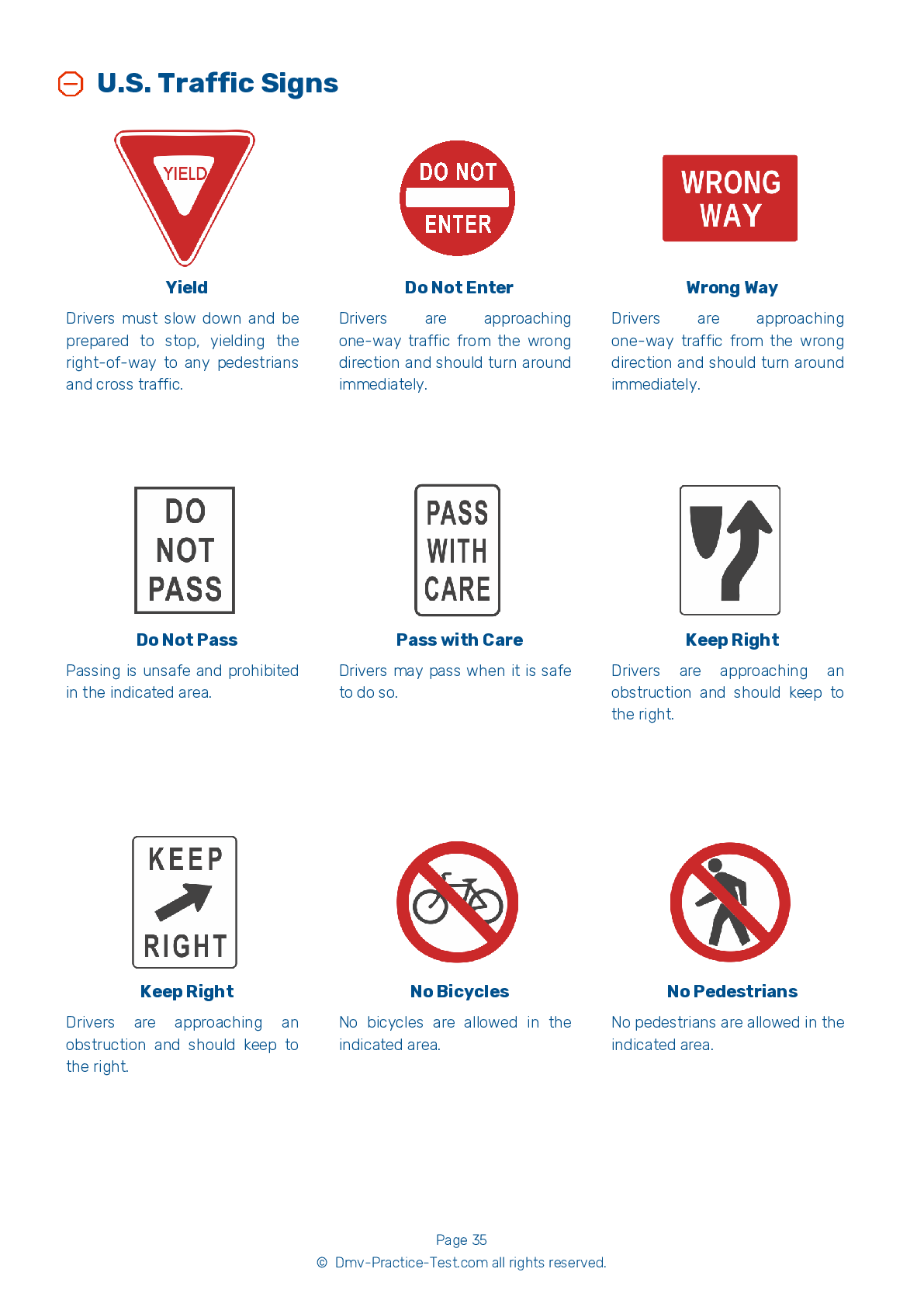Motorcycle Test | License WI 2025 | FREE Online Practice! #15 Page 3 of 5
Take this FREE motorcycle test (license in WI 2025) to check your knowledge of the road rules. To improve your results, download a motorcycle handbook online, study theory, and practice for free on our website. Still worried about how to get a motorcycle license in Wisconsin in 2025? Check our website for more sample tests, train as much as possible, and boost your grades!
16 . A pre-ride inspection should be done:
To prevent any dangerous situations caused by technical issues, you should perform a thorough inspection of your motorcycle before every ride. Compared to a car, small technical problems can have more serious consequences on a motorcycle.
17 . To lean a motorcycle when making a turn, you should:
To turn, a motorcycle must lean. To make the motorcycle lean, press on the handgrip in the direction of the turn.
18 . This sign means:

This sign indicates that right turns are prohibited. Do not make a right turn at an intersection where this sign is posted.
19 . To improve your chances of being seen, you should:
The single most effective thing you can do to help others see your motorcycle is ride with your headlight on at all times.
20 . Which type of sign is yellow with black lettering or symbols?
Warning signs are yellow with black lettering or symbols and provide important information to motorists about upcoming road conditions.
21 . When carrying a passenger, a motorcycle responds to directional changes:
A passenger places extra weight on a motorcycle. Because of the added weight, the motorcycle will respond to the operator's movements more slowly than it would otherwise, taking more time to speed up, slow down, and turn.
22 . When riding during the day, you should:
Most motorcycle crashes occur in broad daylight. To make yourself more visible to other drivers, you should always wear brightly-colored clothing when riding, even during the day.
23 . When a group of riders is passing another vehicle on a two-lane road, the riders should:
On a two-lane road, a group of motorcyclists should pass one at a time. Each motorcyclist should complete the pass before another begins to pass.
24 . If you are passing a row of parked vehicles to your right and there is no oncoming traffic to your left, you should ride:
If you are passing a row of parked vehicles to your right and there is no oncoming traffic to your left, you should ride in the left portion of your lane. This will help you avoid hazards, such as car doors that are opening and pedestrians who are stepping out from between vehicles. If there is oncoming traffic, it is best to remain in the center portion of your lane to maximize the amount of space around you.
See the exact questions that will be on the 2025 Wisconsin DMV exam.
99.2% of people who use the cheat sheet pass the FIRST TIME
Jeneen was tired of paying $5/gallon. She got herself a scooter that required the motorcycle license. She studyed the motorcycle test cheat sheet and passed her test the next day!
Christopher tells us how he knew nothing prior to obtaining the motorcycle study guide, and he only got one question wrong because he clicked on the wrong answer by mistake.



